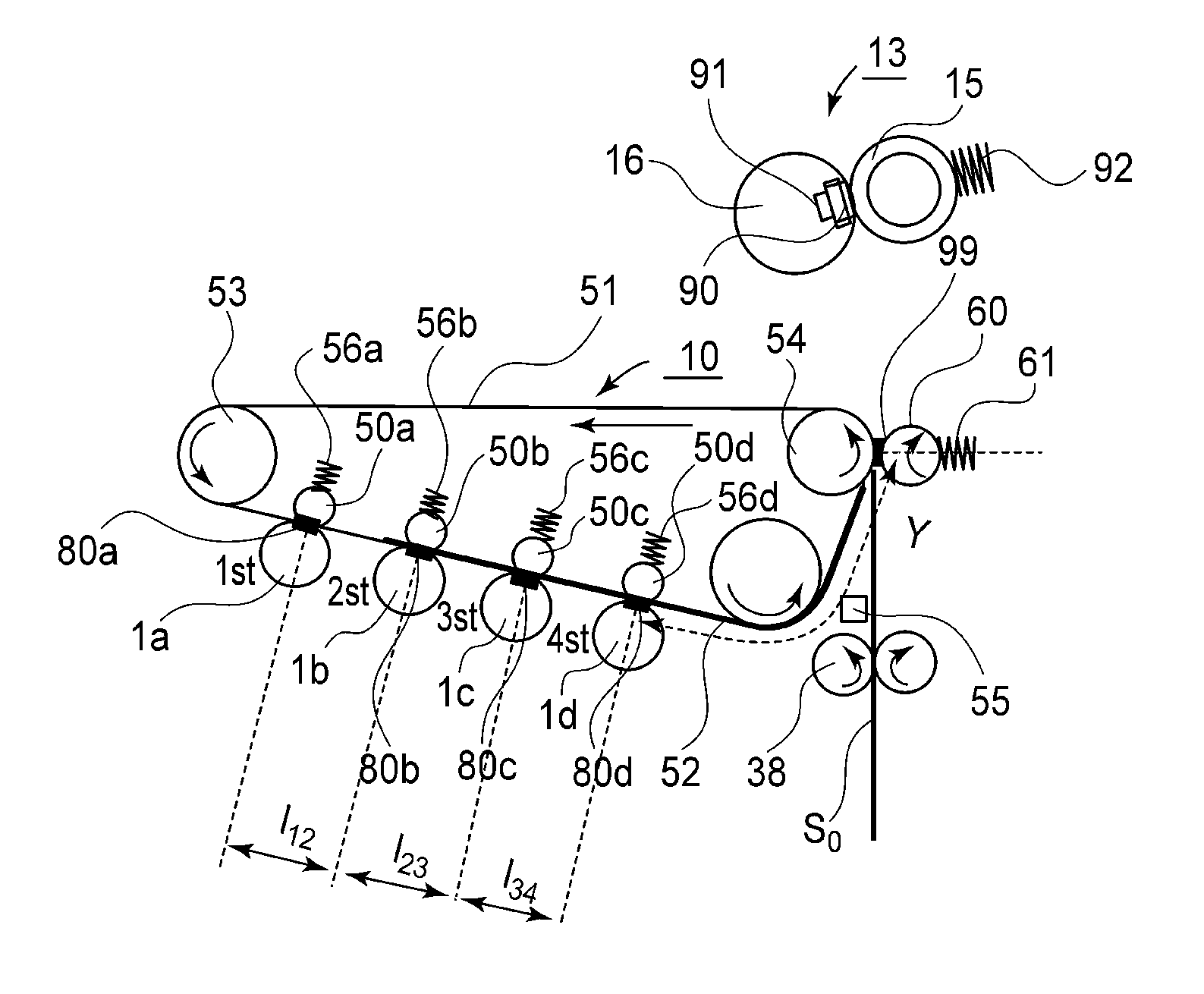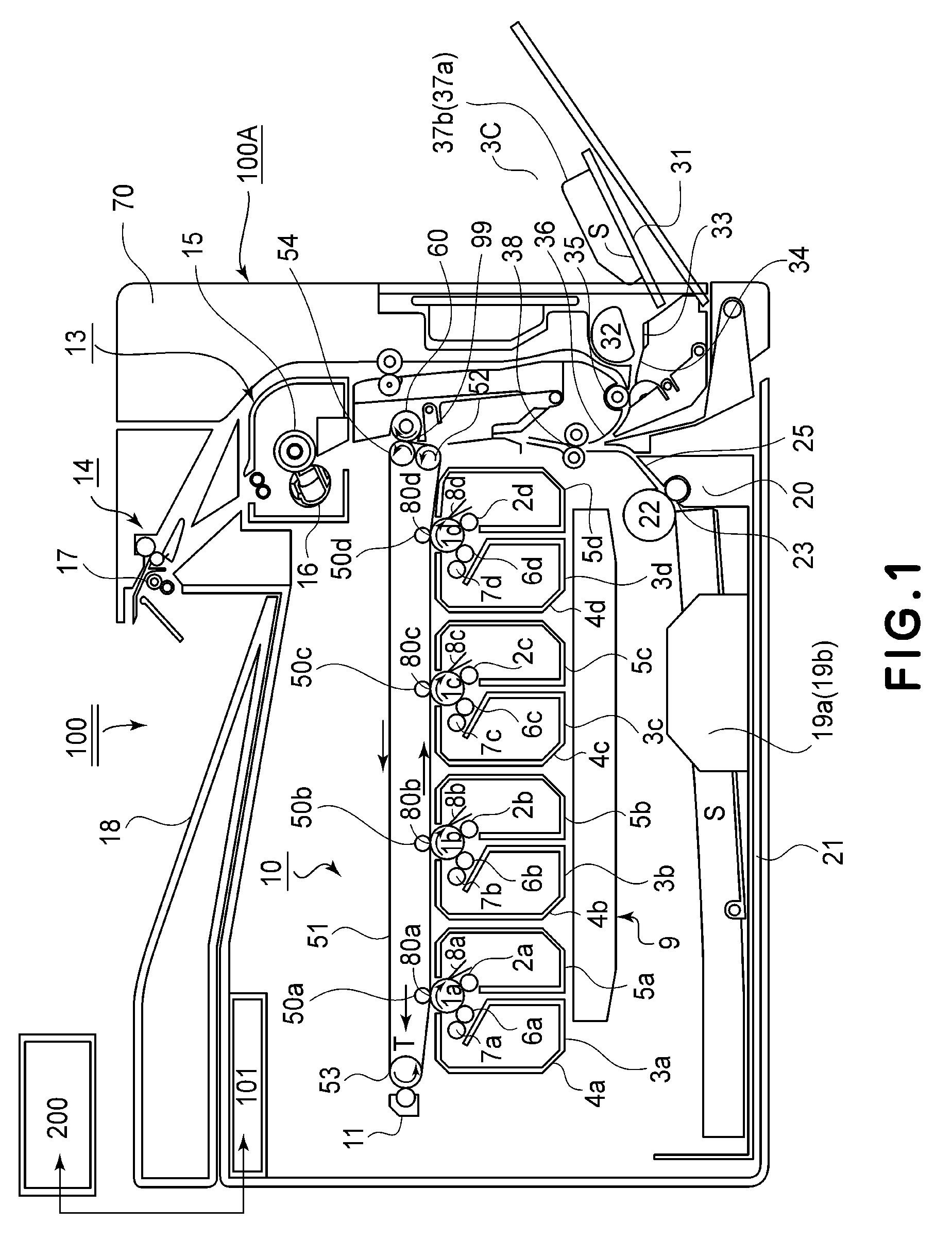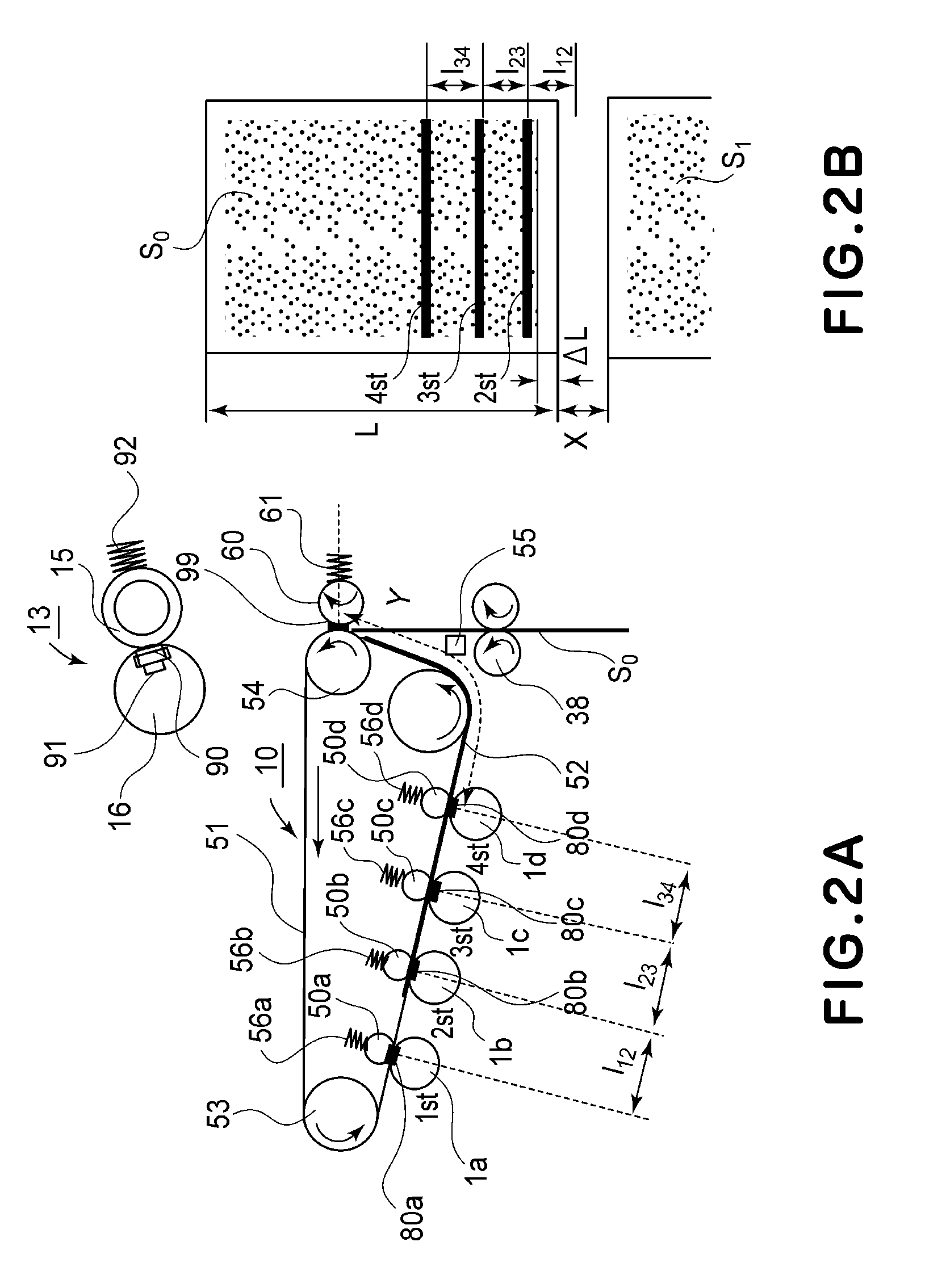Image forming apparatus
a technology of image forming apparatus and forming apparatus, which is applied in the direction of electrographic process apparatus, instruments, corona discharge, etc., can solve the problems of image defect, impact-caused unevenness, and increase variation, so as to achieve stable remedying image defect, no disadvantage, and simple constitution
- Summary
- Abstract
- Description
- Claims
- Application Information
AI Technical Summary
Benefits of technology
Problems solved by technology
Method used
Image
Examples
embodiment 1
(Embodiment 1)
(1) Image Forming Apparatus
[0027]FIG. 1 is a schematic illustration of an embodiment of the image forming apparatus according to the present invention. An image forming apparatus 100 is a color printer of an electrophotographic type. The image forming apparatus 100 effect color image formation or monochromatic image formation on a sheet-like recording material as a recording medium (hereinafter referred to as a “sheet”) on the basis of an electrical image signal input from a host device 200 into a control portion (a control means or a control circuit control portion) 101. The host device 200 is, e.g., a personal computer, an image reader, or the like. The control portion 101 includes a CPU (computing portion), an ROM (storing means), and the like and performs various electrical information transfer between itself and the host device 200 or an operating portion (not shown) of the image forming apparatus 100. Further, control portion 101 effects centralized control of an...
embodiment 2
(Embodiment 2)
[0064]In Embodiment 1, the method of decreasing the absolute value of the developing bias by the predetermined amount (ΔV) for the predetermined time (Δt) with timing when the leading end of the sheet enters the T2 nip 99 is described. However, there is the need to increase the developing bias change amount ΔV when the speed variation of the belt 51 is large, such as when the constitution in which the nip pressure in the T2 nip 99 is particularly large is employed or when the thick paper is passed through the T2 nip 99 in the monochromatic mode. In that case, when only the absolute value of the developing bias is changed, there is a possibility of an occurrence of a problem such that a difference of the developing bias absolute value from other bias set values (those of the developing bias, the RS bias and the blade bias) is largely changed. For example, when the difference between the developing blade bias and the developing bias is excessively small, the toner is dep...
embodiment 3
(Embodiment 3)
[0066]The impact-caused unevenness due to the speed variation of the intermediary transfer belt is also generated in cases other than the case where the sheet enters the transfer portion or comes out of the transfer portion in the in-line type full-color laser beam printer described in Embodiment 1.
[0067]In this embodiment, the case where the present invention is applied to the impact-caused unevenness generated due to the speed variation by the contact and separation of the secondary transfer roller or the cleaning roller when a four color-based (four-pass) full-color laser beam printer of the electrophotographic type is used will be described.
[0068]FIG. 9 is a schematic sectional view showing a structure of an image forming apparatus 200 according to the present invention.
[0069]The image forming apparatus 200 shown in FIG. 9 includes a drum-type electrophotographic photosensitive member 201 as a first image bearing member (hereinafter referred to as a photosensitive ...
PUM
 Login to View More
Login to View More Abstract
Description
Claims
Application Information
 Login to View More
Login to View More - R&D
- Intellectual Property
- Life Sciences
- Materials
- Tech Scout
- Unparalleled Data Quality
- Higher Quality Content
- 60% Fewer Hallucinations
Browse by: Latest US Patents, China's latest patents, Technical Efficacy Thesaurus, Application Domain, Technology Topic, Popular Technical Reports.
© 2025 PatSnap. All rights reserved.Legal|Privacy policy|Modern Slavery Act Transparency Statement|Sitemap|About US| Contact US: help@patsnap.com



